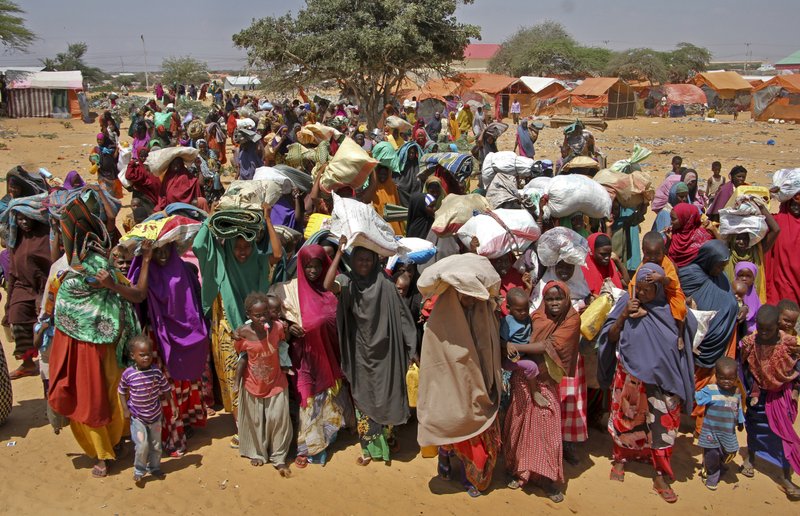MOGADISHU, Somalia -- President Donald Trump's approval of greater U.S. military authority to pursue al-Qaida-linked extremists in Somalia will put civilians further at risk, experts say, especially as drought displaces thousands of people in areas that now will be considered a war zone.
Trump has approved a Pentagon request to allow more airstrikes against extremist group al-Shabab as parts of southern Somalia will be considered areas of active hostilities. U.S. special operations forces can move closer to the fight and call in offensive airstrikes more quickly while increasing assistance to the Somali military.
Some in Somalia, where access to independent information is challenging, could see this as a chance to spread misinformation, said Laetitia Bader, a Somalia researcher for Human Rights Watch.
"At a time when thousands of civilians are currently on the move ... the U.S. should be cautious in relying on information about whether civilians are present before deciding to strike," she said.
[PRESIDENT TRUMP: Timeline, appointments, executive orders + guide to actions in first 100 days]
Somalia's fragile central government, which struggles to assert itself beyond the capital and other limited areas, has not yet commented on Trump's decision. The country also was one of the seven predominantly Muslim countries included in Trump's recent travel ban that has been suspended by federal courts.
Somalia's government has declared the growing drought a national disaster, with the U.N. saying roughly half of the country's 12 million people are at risk. A cholera outbreak also has spread. More than a quarter-million people have been displaced in recent months, the U.N. refugee agency said, as drought-stricken families try to reach points where aid agencies are distributing food.
"I had no other option but to leave," one man, Aydrus Salah, said last week after a trek with his three children during which his wife died of hunger.
Aid agencies cannot distribute in areas under the control of al-Shabab, which dominates remote towns and villages across the south and central parts of the country. The extremist group has promoted its own drought relief efforts, but they are seen as attempts to keep civilians from leaving areas under the militants' control.
"In the environment in Somalia, it's extremely difficult to distinguish combatants from civilians," said Joel Charny, director of the Norwegian Refugee Council's office in Washington. Trump's decision on Somalia follows what humanitarian experts have witnessed in Iraq, Syria and Yemen, where civilians have been killed during U.S.-backed efforts to go after extremists or rebels, he said.
"There appears to be a move by the Trump administration to loosen the rules, allow for more discretion at the local level, back campaigns that may be pushing the edge," Charny said. "The theme seems to be more aggressive, and the consequences seem to be a spike in civilian casualties. It's very worrying, especially if you transfer to the Somalia context in the midst of severe food difficulties and the worst drought in 20 years."
With its frequent suicide bombings and attacks on hotels and military targets in Somalia's capital and elsewhere, security experts say al-Shabab has proved more resilient than the U.S. expected. And now a new threat has emerged, with fighters pledging alliance to the Islamic State extremist group in the semiautonomous northern part of the country.
About 50 U.S. commandos currently rotate in and out of Somalia to advise and assist local troops. The commandos have accompanied Somali forces in several raids against al-Shabab in which dozens of extremists were killed, according to Somali intelligence officials, who insisted on anonymity because they were not authorized to speak to journalists.
The U.S. already has military bases in Somalia, although it has not publicly acknowledged them. They are often used for drone attacks. In the past year the U.S. launched 14 airstrikes -- nearly all drone strikes -- killing some al-Shabab leaders, according to a Somali intelligence official who coordinated with the U.S. on some of them.
It is not clear how many Somali civilians have been killed in the U.S. fight against al-Shabab. A U.S. intelligence report in January said as many as 117 civilians had been killed in drone and other counterterror attacks in Somalia, Yemen and elsewhere during former President Barack Obama's presidency. Human-rights and other groups have said the administration undercounted civilian casualties.
A Section on 04/02/2017

